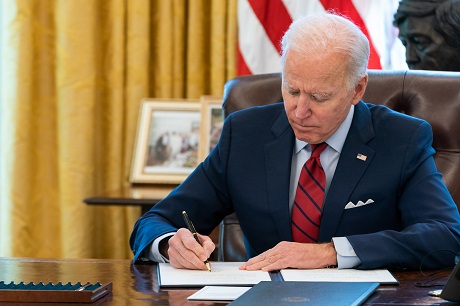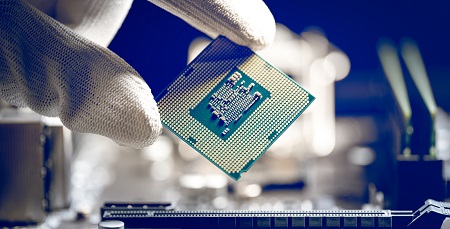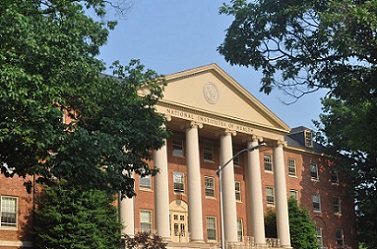 Though the so-called debt limit deal that President Biden and House Speaker Kevin McCarthy struck this spring spared the U.S. from a default on its national debt, the subsequent Fiscal Responsibility Act (FRA) injected substantial uncertainty into the prospect of expanded U.S. government funding of scientific research.
Though the so-called debt limit deal that President Biden and House Speaker Kevin McCarthy struck this spring spared the U.S. from a default on its national debt, the subsequent Fiscal Responsibility Act (FRA) injected substantial uncertainty into the prospect of expanded U.S. government funding of scientific research.
The FRA effectively halted Congressional funding for nondefense discretionary programs for fiscal year 2024 (FY2024) and restricted funding to a 1% increase for FY2025.
Such funding goes to multiple federal agencies each year to fuel numerous research programs that pervade all levels of optics and photonics, and, more broadly, scientific R&D. Under the FRA, the funding for certain science programs could remain flat over the next two years, while any funding increases would necessitate a reallocation of monies supporting other research programs.
“It is disappointing, especially coming off such a banner year in 2022 with the CHIPS and Science Act,” said Jennifer O’Bryan, government affairs director at SPIE. “With this deal for the next two years, there is no way we are hitting the targets that were set in the authorized portion of the bill. It’s unfortunate. Those were great targets.”
Further, the current inflation factor means that levelized funding for science programs will equate with a decrease in spending.
First wave hints
With the passage of the FRA, questions have arisen regarding which science programs might be most affected — including some of the science provisions of the $280 billion CHIPS and Science Act, which became law last year. Many of the research initiatives that the 2022 Act aimed to kickstart were individualized line items in the bill that require further Congressional approval to release their funding. These line items are also accompanied by a funding target and an indicator as to which government agency or agencies are to supply funding.
Congress has already appropriated the more-than $50 billion under the CHIPS portion of the CHIPS and Science Act. That money — roughly $39 billion to build out semiconductor manufacturing and another $11 billion to support up to four distinct R&D centers — is almost certain to meet its targeted funding levels within the microelectronics community.
But the Act also authorized appropriations for another $174 billion, which was divided between the National Science Foundation (NSF), the Department of Energy (DOE), the National Institute of Standards and Technology (NIST), and other government organizations to underwrite funding for R&D related to semiconductor science as well as research in quantum technology, materials science, metrology, datacom/telecom networks, and other fields relevant to photonics technology.

The FRA, which President Biden signed in June, halted Congressional funding for nondefense discretionary programs for fiscal year 2024 (FY2024) and restricted funding to a 1% increase for FY2025. Science programs, including those outlined in the CHIPS and Science Act, will be among those affected by a decrease in financial backing. Courtesy of Adam Schultz.
How the FRA’s spending caps might affect programs authorized by this portion of the CHIPS and Science Act is now an open question.
Authorizing versus spending
Roughly two weeks after President Biden signed the FRA into law, the Congressional House Committee on Appropriations delivered cursory insights into how FY2024 and FY2025 funding could play out for federal agencies.
Congress deploys a multitiered approach to appropriate and allocate funding. After newly passed legislation authorizes spending on a budget resolution, the money is assigned to a congressional committee as a 302(a) allocation to allow debate on how and where it will be applied to a given agency or project. Subcommittees often break out to further parse the funding as 302(b) allocations.
Twelve subcommittees under the Congressional House Committee on Appropriations, for example, gathered to debate how funds budgeted under the FRA will be applied to R&D programs overseen by the Pentagon as well as agencies, such as NSF, DOE, NIST, the National Institutes of Health (NIH), and NASA. So far, the Congressional House Committee on Appropriations has asked nine subcommittees to cut their allocations. Seven of those nine were asked to cut 25% or more year-over-year between their FY2023 (enacted) and FY2024 302(b) allocations.
If or when these cuts are made and approved by the House Appropriations Committee, the legislative process will require the Senate and its Appropriation Committee to mark up the budgets prior to their approval. So, even if the House approves cuts that are even greater than the budget deal requires, the *Senate will still get its say, and negotiations will take place before a final agreement on spending is settled.
An indirect pinch
Regarding the FY2023 appropriations, the U.S. legislature appears to be sparing defense-related programs in favor of cutting the portion of the discretionary spending budget that funds many of the agencies that were listed previously.
Yet, many nondefense technologies are still viewed as strategically important enough to give legislators pause. The semiconductor provisions under the CHIPS and Science Act, for example, do not fall squarely under the umbrella of defense — at least not in historically budgetary terms. But the Act was positioned as critical to defense and future national security.

Though Congress has already appropriated more than $50 billion under the CHIPS portion of the CHIPS and Science Act — financing that aims to build out semiconductor manufacturing and to support the development of up to four distinct R&D centers in the U.S. — the legislation also authorized appropriations for an additional $174 billion. Support for many science initiatives remains in flux as negotiations between the House and the Senate determine which initiatives are to ultimately receive funding, and in what amounts. Courtesy of iStock.
The appropriations process is made even more inscrutable by other considerations, according to Scott Carney, chief science and technology officer at Optica. An agency facing the potential for large cuts, such as NIST, could receive enough funding to run one program to completion, yet face decreased levels of support overall.
“It is entirely possible for NIST’s usual work to be underfunded or in danger,” Carney said. “At the same time, we could have the CHIPS Act pouring huge amounts of money into new NIST programs supporting the semiconductor industry. NIST is responsible for a lot of very important work and infrastructure not covered by CHIPS.”
Science programs that fall outside of that legislation, meanwhile, might need to scramble to maintain the federal financial support that was received in 2023. Such support could remain flat, or see decreases for longstanding initiatives, with research-focused programs funded by discretionary spending at NIH and NSF also in the firing line, said Greg Quarles, CEO of directed energy company Applied Energetics. “There is a tremendous amount of optics and photonics at the NIH,” he said. “Cutting-edge work is taking place in optical tissue imaging and the imaging of abnormal cells, and initiatives like the Cancer Moonshot. The NIH could take a hit there when compared to projected 2024 requests.”
The Cancer Moonshot initiative at the National Cancer Institute under the NIH aims to accelerate discovery, increase collaboration, and expand data sharing among the cancer research community. The project was initially funded by legislation that was passed in 2016.
Quarles and SPIE’s O’Bryan both agree that the NSF is in a precarious position under the FRA. In his FY2024 budget request to Congress, Biden had proposed an 18.5% increase in NSF’s allocation to bring the agency’s budget from roughly $9.5 billion to around $11.3 billion.
But in addition to the FRA’s spending caps, other budgetary vagaries have put challenges ahead for NSF. “NSF has a unique problem because some of its fiscal year 2023 funding is not considered base funding,” O’Bryan said. “It was funded through a supplemental appropriation.” This appropriation was added to the FY2023 appropriations bill.
“It means that NSF is going to have to go further to not feel a cut since a portion of its funding for this fiscal year is considered a supplemental add-on,” O’Bryan said.
NSF spearheads many of the photonics-related research positions at various levels of academia, which enrich the education pipeline. The agency is also behind multiple programs and initiatives that aim to advance integrated photonics.
“I think NSF is probably going to suffer some of the heaviest hits, between 2023 actual appropriations and projected 2024 growth, prior to the approval of the FRA” Quarles said.
Quantum protections
While members of the science community in Washington D.C. and beyond seek to drum up support for their programs, some nondefense technologies stand on firmer ground.
“I would be surprised if Congress went the route of cutting what is considered critical emerging technology such as quantum and artificial intelligence,” O’Bryan said. She added that level funding or near-level funding is more likely for these research initiatives.
The draft FRA arrived on President Biden’s desk while the National Quantum Initiative Advisory Committee (NQIAC) published a report calling on the government to renew the $1.2 billion National Quantum Initiative (NQI). Enacted in 2018, the initiative’s mandate extends for 10 years, though the budget authorizations outlined in its legislation only carry it through the five-year period that ends Sept. 30, 2023.
Similar to the CHIPS and Science Act, the NQI Act authorizes research funding for NIST. When the CHIPS and Science Act became law, it amended the NQI Act to codify NIST’s role in multiple undertakings. NQIAC’s June report reiterates those points and notes that, because of the NQI, federal funding for research on quantum information science roughly doubled between FYs2019 and 2022, reaching over $900 million per year.
“There is a very strong sense within the U.S. government that quantum research is one of those things that will yield technologies that we cannot afford to miss out on,” Carney said.
Carney added that the National Photonics Initiative (NPI) is driving efforts to promote this message and convey to policymakers how important the NQI and quantum technologies are to national interests.
Quarles, who sits on the NPI’s steering committee, said that cybersecurity — as well as the development of directed energy platforms and countermeasures and the development of sensors — are hot-button topics in government circles as well as in optics and photonics circles.
“As far as future competitiveness is concerned, I think members of Congress know at this point that quantum and AI are critical,” O'Bryan said. “It’s something that they’re a bit scared to pull back from.”
Quarles said that he expects the initiatives of the NQI Act to receive funding, even if the funding remains flat. But as comprehensive as the NQI is, research into some quantum-based fields falls outside of its bounds, such as quantum bioscience applications undergoing study at NIH and the development of quantum technology at NASA, Quarles said.
Additional questions
The ebb and flow of government appropriations for scientific research raises questions for researchers, instrument suppliers, and others.
“One of the elevated questions to ask about the consequences of reduced funding is, ‘Who is going to step into the gap?’” Carney said. “Part of the justification for government funding of R&D and basic science is that these investments have large multiples on returns over the long haul. Of course, there are those in the private sector who can see that too.”

The National Institutes of Health is among the federal agencies and entities that is poised to experience year-over-year funding decreases for FY2024 — compared to the current fiscal year — stemming from the Fiscal Responsibility Act. The agency is oversees numerous initiatives that rely on optics and photonics. Courtesy of Lydia Polimeni, NIH.
Technology breakthroughs and commercial instrumentation are the measurable benefits of scientific research. Public funding for basic and applied research is often the starting point for business opportunities and economic productivity and growth.
“The question becomes, ‘Will private sector interest step up and fund things that government isn’t funding?’” Carney said.
In the quantum space, Quarles points to the high number of successful U.S.-based and global startups that have taken off after receiving support from venture capitalists. Startups in fusion science, autonomous vehicles, autonomous and robotic perception, and clean energy are also among those that have seen more private funding in recent years. The case can be made that these technologies are all to be considered critical to global competitiveness and technological sovereignty, if not national defense.
What the government opts to view as defense-critical and as nondefense will at least partly determine private sector funding for science.
“It’s a question for the political process,” Carney said. “If certain investments are in the national interest, should we rely on the private sector to make them?”
*As of press time, the House had released its subcommittee allocations.